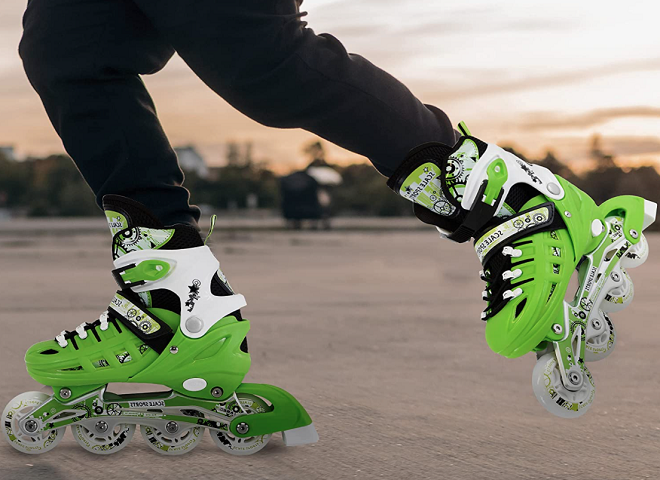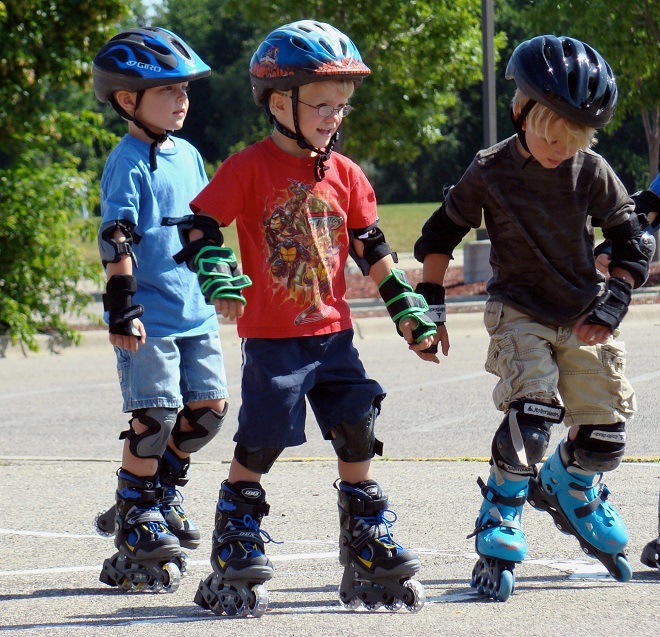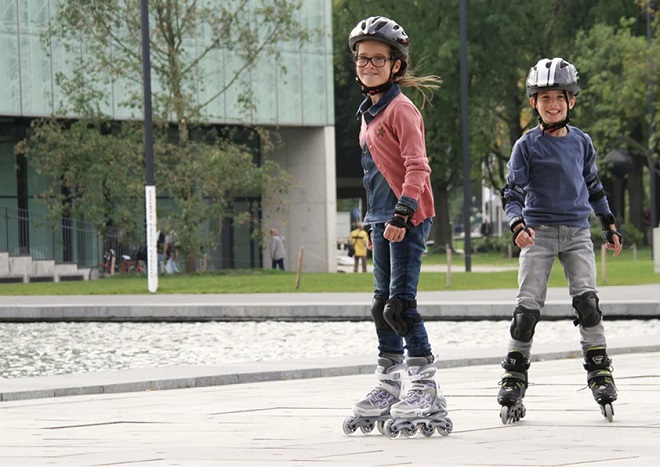Buying inline skates for your kid is a much different process than buying a pair for yourself. Your feet have finished growing, whereas your child’s feet are still in the process of developing, making it challenging to choose a suitable pair. Oftentimes, the perfect pair of roller skates don’t fit them anymore after a year of wearing them.
While it may seem like a hassle having to keep purchasing new skates, it’s actually beneficial for their feet. Wearing roller skates that fit properly will help encourage proper foot development and prevent deformities from occurring. You should take into account several factors when choosing boys’ roller skates for your young skater.
Look for an Adjustable Pair

When looking for the ideal skates for your junior, choose adjustable boys’ inline roller skates. They let you change the size of the skate by up to 4 sizes. If your youngster usually wears a size 11, for instance, you should get a skate that is sized 11-1. If they’re a size 1, you should choose a size 1-4 or 2-5. This way, you’ll watch them skate with the same skates for a long period.
The most crucial consideration when choosing boys’ inline skates is sizing. Children’s feet grow rapidly, so it’s hard to choose a specific size. After one season, some children grow from a size 2 to a size 4, rendering those brand-new skates useless. This is why adjustable inline skates are essential for juniors.
Consider Their Skill Range
Different skill levels require different kinds of skates. Junior inline skates typically come in beginner, intermediate, and rarely advanced intermediate skill ranges. You will mostly find beginner skates for children and not many advanced to expert level skates since young boys still need to develop the necessary muscles to flex a higher-end skate. Consider how often they skate, their current skill level, and the skill level they’re aiming at when choosing a skate skill range.
What are the Different Types of Kids’ Inline Skates?
There are several different kinds of boys’ inline roller skates. Here are the four main types and who they are meant for:
Recreational Skates

These skates are designed for those who want to enjoy skating around the neighbourhood or at the park. They are typically cheaper than other kinds of skates and don’t offer much in terms of support or durability.
In terms of build, recreational skates typically have a soft boot with a single closure system. They also come equipped with smaller wheels, which are good for beginners but won’t offer the same speed or maneuverability as larger wheels.
Fitness Skates
Offering a more supportive and comfortable ride, fitness skates are ideal for those who want to use skating as a form of exercise. They typically have a stiffer boot than recreational skates and come equipped with larger wheels, making them faster and more agile.
While fitness models have more in common with racing skates, they don’t offer the same level of speed or performance. They also tend to be more expensive than recreational models, mainly due to the higher quality materials used in their construction.
Aggressive Skates
Aggressive skates are designed for those who want to do tricks and stunts. Seeing as most little ones aren’t interested in this kind of skating, you might want to steer clear of these skates until your child is a bit older.
Once they’ve outgrown their beginner skates, your child might be interested in a pair of aggressive ones. These skates have a very sturdy build, with a hard boot and large wheels. The large wheels are necessary for doing tricks that require a lot of precision and power, which is something that these skates can provide.
Don’t Forget the Safety Gear
Similar to skiing, biking, and skateboarding, inline skating requires suitable protective gear. Falling is a natural part of inline skating, and you should help your child learn how to safely fall on their roller skates. However, it’s also important to protect them with the right gear until they learn their falling methods. So, after you find the ideal boys inline skates, consider getting the following protective items:
Elbow/Knee pads

In a fall, the knees and elbows are particularly vulnerable to damage, and bruising or spraining either one is a painful thing to experience. Similar to a helmet for your knee or elbow, roller skating pads are typically made of a soft sleeve or strap with some cushioning and a hard outer shell.
Choose the appropriate sizes when shopping for elbow and knee pads! Use a soft measuring tape or string to find the diameter of your child’s arm a few centimetres above their elbow to find the size. Apply the same step for the knee pads. Look for strong, durable and adjustable straps that hold the pads in place!
Wrist Guards
Skaters sometimes experience sprains and fractures as a result of falling onto their wrists. To prevent this, they wear wrist guards. While it’s best to avoid catching your wrists when you fall, wearing a wrist guard lowers the chance of injury.
Wrist guards come in two types: slip-on and wrap. Slip-on wrist guards have a lot of support but slide over your hand like a fingerless glove. Wrap wrist guards include strong support as well, but instead of putting them on like gloves, you wrap them around your hand and wrist before fastening them with straps for a more secure fit.
Helmet
Lastly, helmets offer your child protection from minor cuts and bruises to more serious injuries and concussions. Use a soft tape measure to wrap around their head and determine the appropriate size for a helmet. Place the tape about two finger widths above their ears and over their eyebrows. The tape should be snug against their skin but not too restricting. Look for a helmet that rests level on the top of the head without tilting back or up.
























